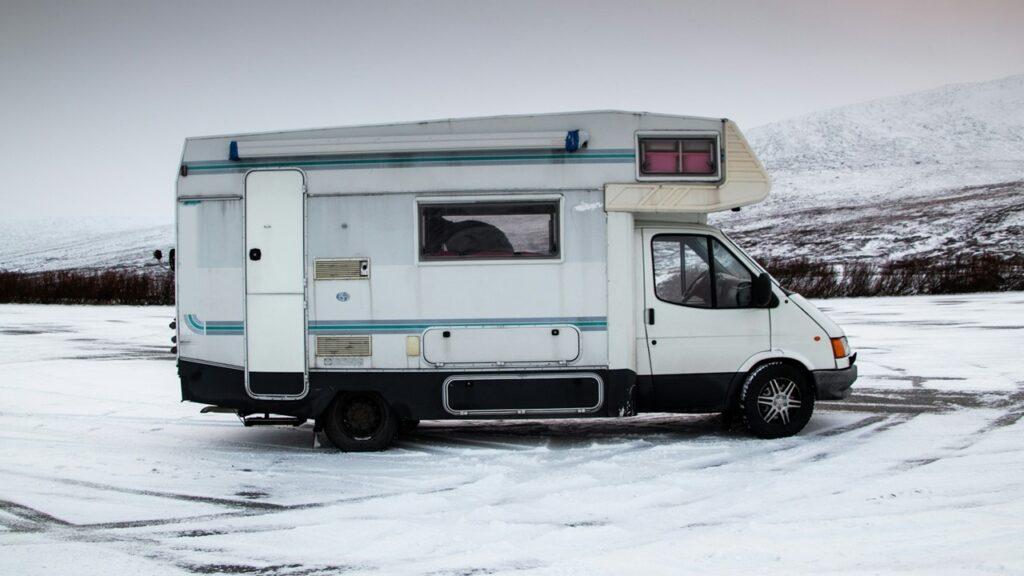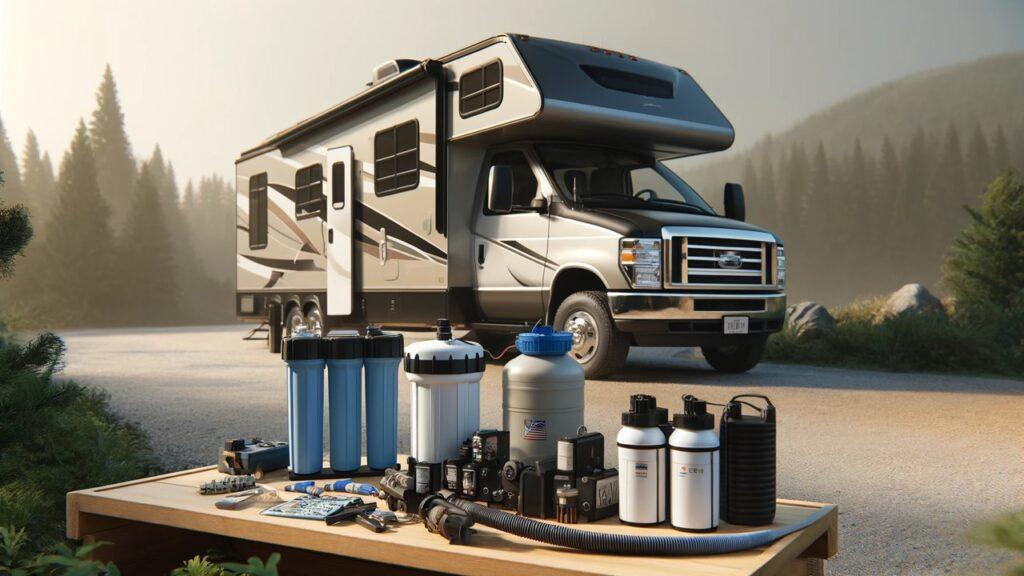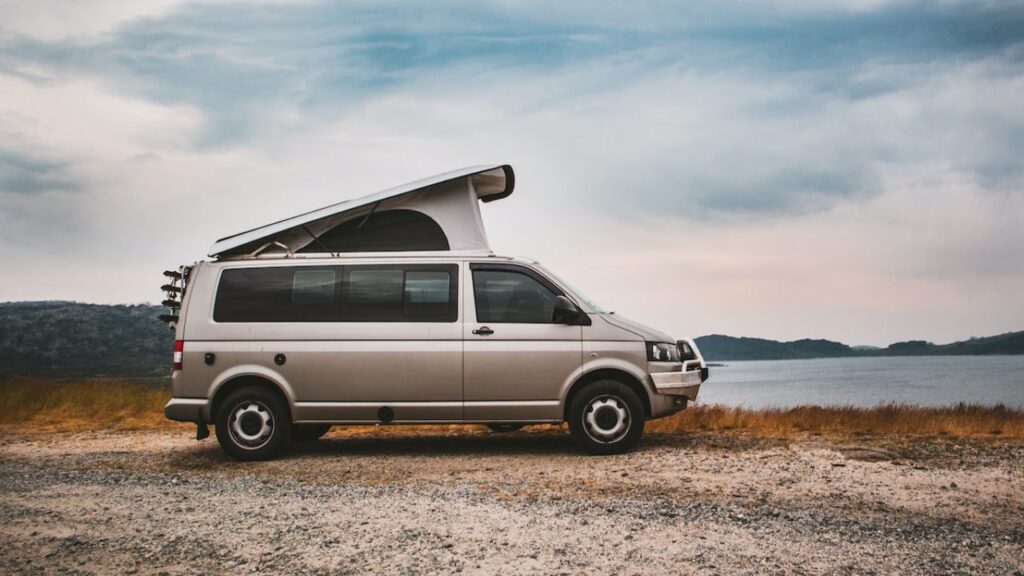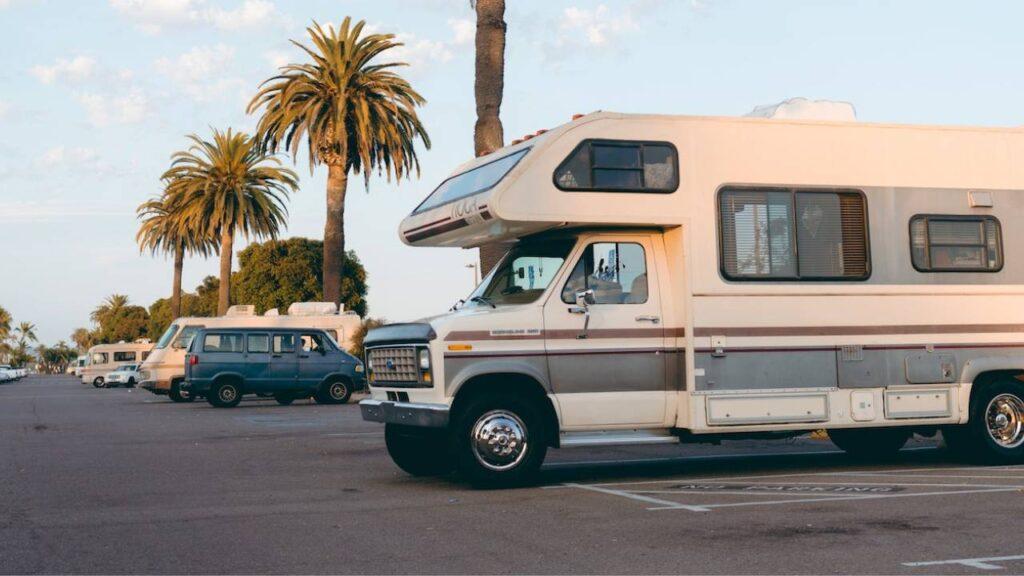
Winter RV adventures can be magical, but staying warm is key to enjoying the journey. Heating your RV efficiently ensures you stay cozy without burning through your fuel or electricity. Let’s explore some efficient ways to heat your RV in winter to keep your RV toasty during those chilly months!
RV Heating System
Before diving into the specifics, it’s essential to understand the basics of RV heating systems. Most RVs come with built-in heating options like furnaces, but there are several other methods you can use to ensure you stay warm. Knowing the different types of heating systems can help you make informed choices for staying comfortable in your RV.
Types of RV Heating Systems
Let’s start. There are several types of heating systems you can use in your RV. Each has its own advantages and drawbacks. Understanding these will help you choose the best one for your needs.
Propane Furnace
Most RVs come equipped with a propane furnace. These furnaces are powerful and can heat your RV quickly, making them a reliable choice for cold weather. However, they rely on propane, which can be a limiting factor if you’re not near a refill station. Propane furnaces can also be noisy and might consume a lot of propane, so it’s important to monitor your usage.
Advantages:
- Quick and efficient heating
- Reliable in extremely cold temperatures
Disadvantages:
- Consumes propane rapidly
- Can be noisy
Electric Heaters
Electric heaters are a popular choice among RVers, especially when hooked up to shore power at a campsite. They come in various forms, including ceramic heaters, oil-filled radiators, and infrared heaters. Electric heaters are generally safe, quiet, and convenient, but they do require a power source. If you’re relying on your RV batteries, be cautious about power consumption to avoid draining your batteries.
Advantages:
- Safe and quiet
- No propane usage
Disadvantages:
- Requires electricity
- Can drain RV batteries if not on shore power
Radiant Heaters
Radiant heaters, such as infrared heaters, work by heating objects and people directly rather than heating the air. This method is efficient and provides a comfortable warmth without creating drafts. Radiant heaters are typically portable and can be moved around your RV as needed. However, they do require electricity, so their use is best when you have access to a consistent power supply.
Advantages:
- Efficient and comfortable warmth
- No drafts
Disadvantages:
- Requires electricity
- Limited heating area
In conclusion, choosing the right heating system depends on your specific needs and circumstances. Consider the advantages and disadvantages of each type to make an informed decision.
Efficient Heating Tips
Moving on, let’s explore some tips to maximize the efficiency of your RV heating systems. These tips will help you stay warm while conserving energy and resources. Implementing these strategies can make your RV more comfortable and energy-efficient.
Insulate Your RV
Proper insulation is crucial for maintaining warmth inside your RV. Without good insulation, any heat you generate will quickly escape, making it hard to keep your space warm.
- Windows: Insulate windows with thermal curtains, bubble wrap, or reflective panels. These materials help keep the cold out and the warmth in.
- Doors: Ensure your doors are properly sealed. Use draft stoppers or weatherstripping to block cold air from seeping in.
- Walls and Floors: Adding extra insulation to the walls and floors of your RV can make a significant difference. Use foam boards or reflective insulation materials to boost your RV’s thermal efficiency.
Use Rugs and Carpets
Covering your RV floor with rugs or carpets can add an extra layer of insulation. Cold air can seep through the floor, so having thick, cozy rugs can help trap heat and make your space more comfortable. Plus, they feel warm and soft underfoot, adding to the coziness of your RV.
Thermal Curtains
Thermal curtains are designed to keep the cold out and the warmth in. They are made of heavy, insulated materials that block drafts and help maintain a consistent temperature inside your RV. Installing thermal curtains on all your windows and even separating your living area from sleeping areas can make a big difference in heat retention.
In conclusion, implementing these efficient heating tips can significantly enhance your comfort during winter RV trips while conserving energy and resources.
Alternative Heating Methods
Additionally, if the built-in heating systems are not sufficient, consider these alternative heating methods to stay warm. These methods can provide additional warmth and flexibility in different situations.
Ceramic Heaters
Ceramic heaters are small, portable, and efficient. They use electricity to generate heat and are great for warming up small spaces. Ceramic heaters are safe, often featuring automatic shut-off and tip-over protection. They are ideal for use in well-ventilated areas and can provide a quick boost of heat when needed.
Catalytic Heaters
Catalytic heaters use propane but are more efficient than traditional propane furnaces. They operate without an open flame, making them safer and more fuel-efficient. Catalytic heaters are perfect for boondocking or when you’re not connected to shore power, as they don’t require electricity.
Wood Stoves
Wood stoves can be a fantastic heating option if you enjoy the ambiance of a real fire. They’re very efficient and can heat your RV thoroughly. However, they require proper installation, ventilation, and safety precautions. A wood stove can add a rustic charm to your RV, but be sure to check local regulations regarding wood stove use in RVs.
In summary, these alternative heating methods provide flexibility and additional options to keep your RV warm during winter trips.
Maintaining Your Heating System
Moreover, regular maintenance of your heating system is essential for efficiency and safety. Keeping your heating system in top shape ensures it works when you need it most and lasts longer.
Regular Maintenance
Regularly check and maintain your heating system to ensure it’s working efficiently. Clean filters, inspect ducts for blockages, and test the system before heading out on a trip. A well-maintained heating system not only works better but also lasts longer and is safer to use.
Monitor Propane Levels
Keep an eye on your propane levels to avoid running out in the middle of a cold night. It’s a good idea to carry extra propane tanks for longer trips or when you’re staying in remote areas. Investing in a propane level monitor can help you keep track of your usage and prevent unexpected shortages.
To conclude, maintaining your heating system ensures you stay warm and safe throughout your RV adventures.
Energy-Saving Tips
Furthermore, these energy-saving tips can help you stay warm without overusing your heating systems. By being mindful of energy consumption, you can extend your resources and reduce costs.
Layer Up
Wearing layers of clothing is an excellent way to stay warm without cranking up the heater. Thermal underwear, wool socks, and cozy sweaters trap body heat and keep you comfortable. Don’t forget to wear a hat and gloves if it gets particularly cold inside your RV.
Hot Water Bottles
Fill hot water bottles and place them in your bed or seating area to provide localized warmth. They’re a simple and effective way to stay warm, especially at night. You can also use heating pads or electric blankets for extra warmth.
Use Reflective Panels
Reflective panels can be placed behind your heater to direct more warmth into the living area instead of letting it escape through the walls. This simple trick can enhance the efficiency of your heating system and keep your RV warmer.
In summary, these energy-saving tips can help you stay warm and cozy without relying solely on your heating systems.
DIY Heating Solutions
Additionally, if you enjoy DIY projects, here are some homemade solutions to keep your RV warm. These projects can be fun and cost-effective ways to enhance your RV’s warmth.
Homemade Insulation
If you’re handy, you can create homemade insulation using foam boards or bubble wrap. Custom-fit these materials to windows, doors, and other drafty areas to enhance your RV’s insulation. This cost-effective solution can significantly reduce heat loss.
Thermal Blankets
Invest in thermal blankets for extra warmth. These are especially useful for keeping your bed warm at night. Thermal blankets are designed to reflect body heat and provide an additional layer of insulation. In conclusion, DIY heating solutions are a great way to enhance your RV’s warmth on a budget.
Safety First
Finally, always prioritize safety when using heating systems in your RV. Ensuring proper safety measures can prevent accidents and keep you and your loved ones safe.
Carbon Monoxide Detectors
Always have carbon monoxide detectors in your RV if you’re using propane heaters or wood stoves. This gas is odorless and can be deadly if not detected. Regularly check the batteries and functionality of your detectors to ensure they’re working properly.
Ventilation
Ensure proper ventilation when using any heating source, especially those that burn fuel. This prevents the buildup of harmful gases and ensures a steady supply of fresh air. Never block vents or close your RV completely when using fuel-based heaters. In summary, safety should always come first to ensure a warm and hazard-free RVing experience.
Wrapping It Up!
Staying warm in your RV during winter doesn’t have to be a challenge. With the right heating systems, proper insulation, and some smart tips, you can enjoy your cold-weather adventures in comfort. Remember to prioritize safety and maintain your heating equipment regularly.
Related FAQs
What Is The Right Way To Heat An RV In Winter?
The best way to heat your RV in winter depends on your preferences and available resources. A combination of a propane furnace, electric heaters, and proper insulation usually works best. Experiment with different methods to find what works best for your RV and lifestyle.
Can I Use A Regular Space Heater In My RV?
Yes, you can use a regular space heater, but make sure it’s designed for indoor use and has safety features like tip-over protection and an automatic shut-off. Always monitor the heater while it’s in use and avoid using extension cords to prevent electrical hazards.
How Can I Keep My RV Warm Without Electricity?
To keep your RV warm without electricity, use propane heaters, catalytic heaters, or a wood stove. Make sure to insulate your RV well to retain heat. Layering up on clothing and using hot water bottles can also help you stay warm.
Are There Any Risks Associated With Using A Propane Heater In An RV?
Yes, using a propane heater in an RV can pose risks like carbon monoxide poisoning and fire hazards. Always have a carbon monoxide detector and ensure proper ventilation. Follow the manufacturer’s instructions and never leave the heater unattended.
How Can I Prevent Heat Loss In My RV?
Prevent heat loss by insulating windows, doors, and walls, using thermal curtains, and sealing any drafts. Rugs and carpets also help retain warmth. Regularly check for any new gaps or areas where cold air might be entering your RV.
Can Solar Panels Help Heat My RV In Winter?
Solar panels can power electric heaters, but they may not provide enough energy for continuous heating in winter. They are best used to supplement other heating methods. Pairing solar panels with energy-efficient heaters can maximize their effectiveness.
As outdoor enthusiasts ourselves, we understand the significance of reliable gear that can withstand the elements and support you throughout your journey. We try to provide as much real life information with our guides and how tos to the readers as possible. Our honest and transparent reviews of essential outdoor gadgets and products are rooted in testing and experience. We take great satisfaction in offering unbiased evaluations, ensuring that you can make informed decisions when investing in outdoor gear. As an affiliate website, we may earn a small commission from some of the products we feature. However, rest assured that our opinions are not influenced by this, and your trust is always our top priority.



